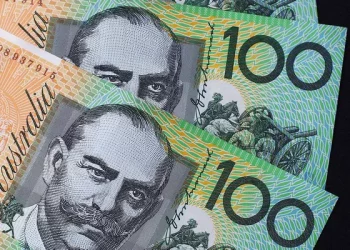The currency of China often generates confusion due to its dual names – the yuan and the renminbi (RMB). Understanding the distinction between these terms, as well as their historical and practical contexts, is essential for anyone dealing with Chinese currency. This article delves into the various aspects of the Chinese currency, from its origins and denominations to its role in global trade and the implications of China’s capital controls.
What Is Chinese Currency?
China’s currency is known by two names: the yuan and the renminbi (RMB). These terms are often used interchangeably, but they serve different functions in the financial and economic contexts. The renminbi, which translates to “people’s currency,” is the official currency of the People’s Republic of China. The yuan is the primary unit of this currency. In essence, the relationship between the renminbi and the yuan is similar to that between the British pound and the sterling.
Historical Context
The origins of China’s modern currency system can be traced back to the establishment of the People’s Bank of China (PBOC) in 1948. Before the renminbi, various regions in China used different currencies, leading to economic fragmentation and instability. The introduction of the renminbi aimed to unify the currency system under a single, stable monetary framework, facilitating trade and economic growth.
Over the decades, the renminbi has undergone significant changes. Initially, it was tightly controlled and limited to domestic use. However, with China’s economic reforms and opening up to the global market in the late 20th century, the renminbi began to play a more prominent role in international trade and finance. Despite these developments, the currency remains subject to strict government regulations and capital controls.
Renminbi (RMB)
The renminbi (RMB) is the official currency of China, symbolizing the country’s monetary authority. The term “renminbi” means “people’s currency” in Mandarin, reflecting the government’s socialist principles when the currency was established. The People’s Bank of China is responsible for issuing and regulating the renminbi, ensuring its stability and integrity within the financial system.
Yuan (CNY)
The yuan (CNY), often referred to as the “kuai” in colloquial Chinese, is the primary unit of the renminbi. It is used in everyday transactions, similar to how dollars, euros, or pounds are used in their respective regions. The term “yuan” is also used internationally to denote China’s currency, particularly in the context of foreign exchange (forex) markets.
In terms of its function, the yuan serves as the basic accounting unit for pricing goods and services, financial transactions, and economic planning. When people refer to prices or wages in China, they typically use the term “yuan.”
International Standards
In international finance and trade, the yuan is represented by the ISO 4217 currency code “CNY,” which stands for “Chinese Yuan.” This abbreviation is crucial for identifying the currency in global markets and facilitating international transactions. The significance of the CNY code lies in its use in forex markets, where currencies are traded. The standardization provided by ISO 4217 ensures that there is no confusion or misinterpretation regarding China’s currency in international dealings.
See Also: Current RMB Exchange Rate: 1180 Yuan in USD
Currency Denominations
The yuan is subdivided into smaller units called jiao and fen. One yuan is equivalent to 10 jiao, and one jiao is equivalent to 10 fen. This hierarchical structure is similar to the system used in many other currencies, such as dollars and cents or pounds and pence.
The denominations of the yuan are as follows:
- Banknotes: 1, 5, 10, 20, 50, and 100 yuan
- Coins: 1 yuan, 5 jiao, and 1, 2, 5 fen
These denominations facilitate a wide range of transactions, from small purchases to larger financial dealings. The variety of banknotes and coins helps cater to different needs within the economy, ensuring convenience and efficiency in everyday transactions.
Exchange Rates
An important aspect of the yuan’s international presence is the distinction between its onshore (CNY) and offshore (CNH) exchange rates. The onshore rate, CNY, is the rate at which the yuan is traded within mainland China. This rate is tightly controlled by the People’s Bank of China and reflects the official monetary policy.
The offshore rate, CNH, pertains to the trading of yuan outside mainland China, primarily in financial hubs like Hong Kong. The CNH rate is subject to market forces and can differ significantly from the onshore rate. The existence of two separate rates stems from China’s capital controls, which restrict the flow of currency across its borders to maintain financial stability and control over monetary policy.
The dual exchange rate system allows for greater flexibility in international trade and investment while enabling the Chinese government to retain control over its domestic financial environment. The difference between CNY and CNH can be influenced by various factors, including market demand, economic conditions, and geopolitical events.
Global Trade and Economics
The yuan plays a pivotal role in global trade, particularly given China’s position as one of the world’s largest economies and trading nations. The increasing use of the yuan in international transactions reflects China’s growing economic influence and the efforts to internationalize its currency.
In recent years, China has actively promoted the use of the yuan in global trade and finance. Initiatives such as currency swap agreements with other countries, the inclusion of the yuan in the International Monetary Fund’s Special Drawing Rights (SDR) basket, and the establishment of offshore yuan trading centers have bolstered the yuan’s international profile.
The yuan’s relationship with the U.S. dollar is particularly significant. The dollar has traditionally been the dominant currency in global trade and finance, and the yuan’s rise poses a potential challenge to this status quo. The yuan’s increasing role in global trade is seen as part of China’s broader strategy to reduce dependence on the dollar and enhance its own financial autonomy.
Capital Controls
China’s capital controls are a key element in understanding the yuan’s convertibility and international use. These controls include restrictions on currency exchange, limitations on the amount of money that can be moved in and out of the country, and regulations on foreign investment.
The primary purpose of these controls is to maintain financial stability and prevent capital flight, which could destabilize the economy. However, they also limit the yuan’s full convertibility and restrict its seamless integration into the global financial system.
Despite these limitations, China has gradually eased some of its capital controls in recent years, allowing for more foreign investment and greater flexibility in currency exchange. These measures are part of China’s broader efforts to integrate more deeply into the global economy and enhance the international role of the yuan.
Conclusion
The distinction between the yuan and the renminbi, the historical context, and the various facets of China’s currency system are crucial for understanding the broader implications of dealing with Chinese currency. The renminbi, as the official currency, and the yuan, as its primary unit, play significant roles in both domestic and international financial contexts.
Understanding the denominations, exchange rates, and the impact of capital controls provides a comprehensive view of how the yuan functions within the global economy. As China continues to grow and assert its economic influence, the yuan’s role in international trade and finance is likely to expand, making it increasingly important for individuals and businesses to understand the intricacies of this influential currency.
In practical terms, individuals dealing with Chinese currency should be aware of the dual exchange rates (CNY and CNH), the impact of capital controls, and the global economic dynamics that influence the yuan’s value. This knowledge will help navigate financial transactions and investments involving China’s currency more effectively.
Related Topics:

























